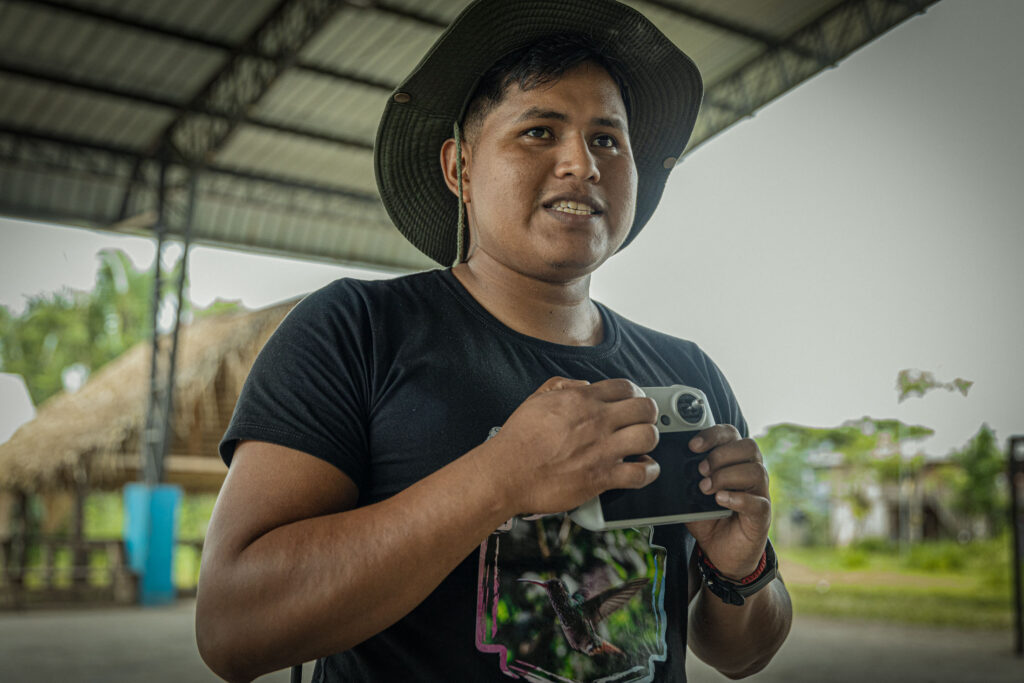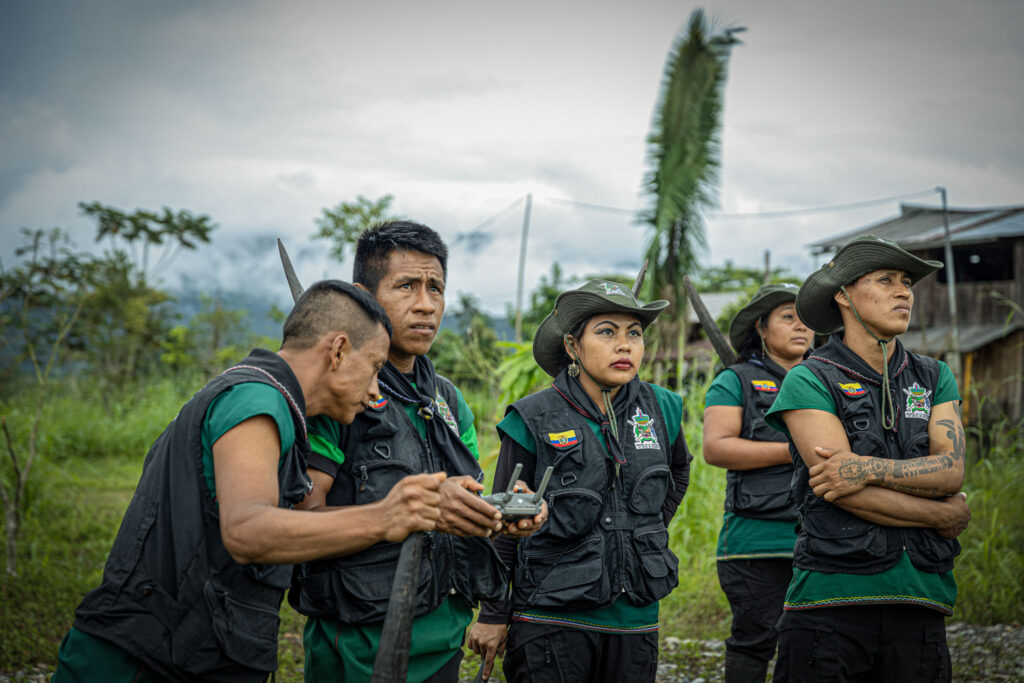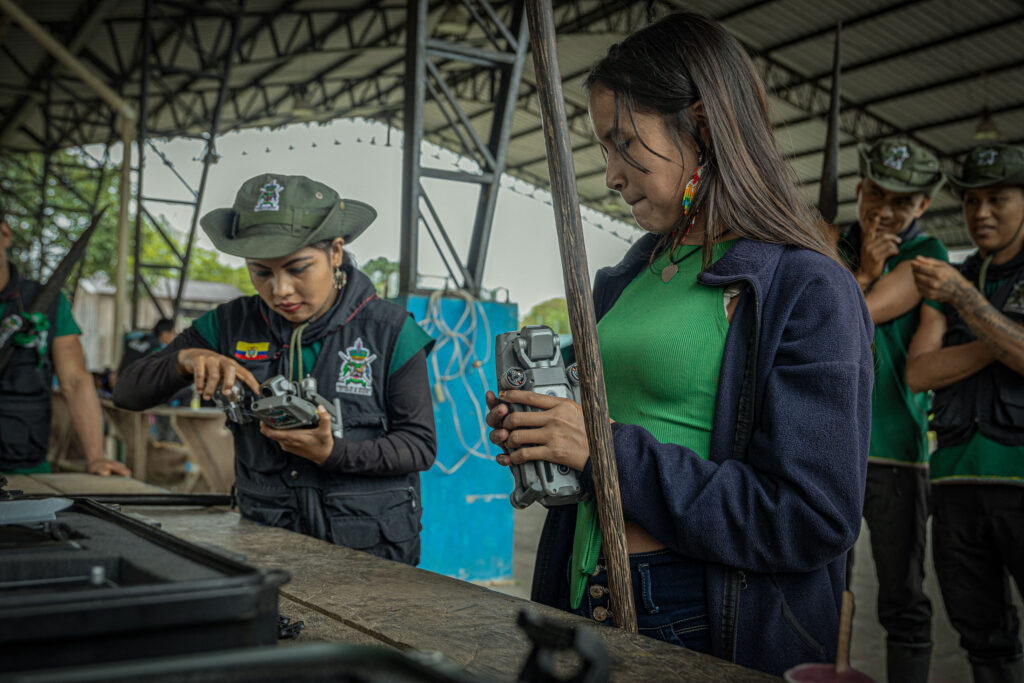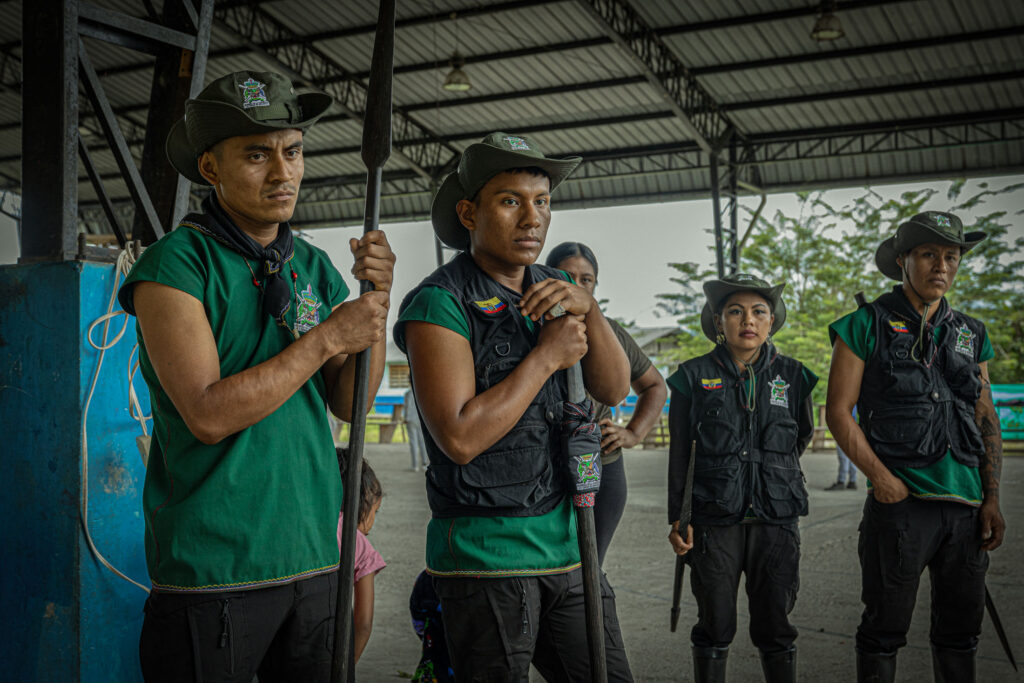My name is Nixon Andy Narváez, I am 26 years old and come from the A’i Cofán community of Sinangoe. I am also part of the Sinangoe guard, which travels and protects the Cofán ancestral territory, carrying out surveillance and monitoring work. My main role within the guard is territorial monitoring and documentation for the purpose of making documentaries.
Over the past five years, I have been learning how to use drones and incorporate them into our work as guards. The data provided by the drone flights has given our community a lot of information about invasions of the territory and the presence of miners. Drones widen our vision and allow us to observe many corners of the territory more effectively.

Recently, we delivered new drone equipment and conducted trainings in the Sinangoe community so that our compañeros can have greater knowledge of the equipment and greater autonomy in its management. Together we practiced how to turn on the equipment, how to change the propellers and batteries, and how to start documenting.
It gives me great joy to be able to share what I have learned over the years, and it motivates me to see that there are many women and many young people who are happy to learn and join the guard. The Sinangoe Guard, the oldest in Ecuador, has been in operation for almost seven years, monitoring around 63,000 hectares of forest. Technology is a key tool that strengthens our work.



As my colleague Edison Lucitante, coordinator of the Indigenous Guard, says, “By knowing how to handle this equipment, I feel stronger, because the ancestors have never done it this way. In my heart I feel that with these technological tools, we have managed to gain more strength and power, because they are useful to us. Wherever we need to be, we can now get there. If we reach a dangerous part of the territory for example, we can now fly there, which is much easier than walking.”
We continue to learn constantly, exploring the possibilities of technology and how best to apply it to the needs of our community and our guard. Each person we train brings their own curiosities and interests as well.



As Edison relates, “With the drone, what interests me most is topography, how to select points with a drone. That is why I am interested in learning the ins and outs of this equipment, so I can also collaborate with people who know how to map or select points. I hope to open a learning space with other colleagues.”
Mario Criollo, another member of the guard, reflects, “For me it is the first time I have handled a drone. I don’t want it to be the last. I want to continue having these workshops, every month, to learn more. For me as a guard, it is important to be able to handle the equipment. On a patrol, it is almost essential to fly the drone. Many colleagues are encouraged to participate and learn more.’
Ana Lucitante, who is also part of the Sinangoe guard, brings an interest in what the drone can contribute to community documentation. As she says, “I want to learn more so I can fly the drone, record videos, and take photos. That motivates me – being able to document and support the community.”




